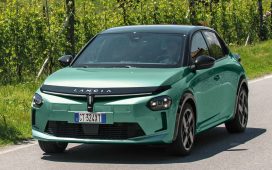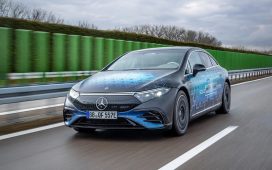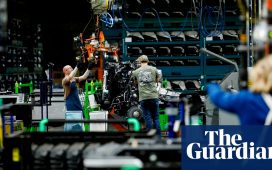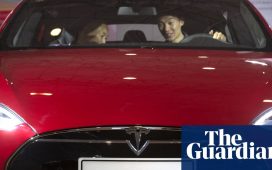- Ubitricity plans to add 300 charging points to Liverpool, UK, lampposts, with each 5-kW charging point requiring under two hours to install.
- This type of curbside charger is aimed at apartment dwellers in cities who do not have overnight charging opportunities close to their buildings.
- The company, now owned by Shell, has installed over 6000 chargers in London alone.
Despite several states’ ambitious plans to phase out the sale of gas- and diesel-engined cars and light trucks by 2035 or earlier—including New York and California—relatively little attention is given in US cities to apartment dwellers who have streetside parking or other limited options for charging at home. Curbside chargers are rare in the US, with progress being made at a glacial pace in the few cities that are actually addressing the problem.
Could existing city infrastructure provide a solution to boost curbside charging?
A company called Ubitricity certainly thinks so, with plans to install 300 charge points into city lampposts in Liverpool, UK. Among other things, this will give Liverpool the status of third largest public charging network in the country, behind only London and Coventry.
The company says that the charge points take less than two hours to install, and feature 5-kW charging speeds, with the locations chosen by residents and businesses in the city. The project will add to 150 existing public charge points in Liverpool, which is far behind the south of the UK when it comes to charging. Ubitricity notes that a study by the Department of Transport determined that by mid-summer 2022, the country’s northwest region had 76% fewer public chargers per 100,000 residents than London.
“This program puts down a real mark of intent to provide the necessary infrastructure to help the move away from petrol and diesel powered cars,” said Liverpool city councilor Dan Barrington. “The fact that the roll-out is being led by community requests means the points are going where the demand is needed most which means they’ll be getting maximum usage.”
Of course, 300 additional chargers with 5-kW speeds won’t address every EV owner’s needs in Liverpool alone, as the city has almost 500,000 residents. But as a demonstration of accessible charging infrastructure, turning existing street lights into charge points, is one of the best examples of cost effective and accessible EV charging infrastructure that could be replicated in the US.
The company is making progress in other parts of the UK, with an additional 500 Ubitricity chargers slated to be added to Westminster’s lampposts by Siemens. The London borough is far ahead of other parts of the sprawling capital when it comes to this type of curbside charger, with the company having installed over 6000 charging points across London since 2018.
“Westminster has built an impressive on-street electric vehicle (EV) charging network, making the transition to EV much more accessible to their residents,” said Michael Sharkey, senior technical sales manager at Siemens eMobility. “These latest installs will bring the number of on-street chargers in Westminster to over 2000– the highest number of any London borough.”
By comparison, charging infrastructure building efforts in US cities are now increasingly focused on larger hubs with DC fast-chargers that will attempt to offer some of the amenities offered by gas stations, especially in states that have adopted California’s 2035 goal for phasing out sales of gas and diesel-engined cars and light trucks. Both types of charging infrastructure are badly needed in the US, though public charging points for city dwellers are mostly available in locations like apartment complex garages—not curbside spots that can be used by everyone.
Perhaps what’s needed in the US to kickstart this effort is an example city where a couple thousand lamppost chargers can be installed, to demonstrate the benefits of this type of overnight curbside charger. It’s the kind of push that could make the 2035 target seem achievable.
Will lamppost chargers make a difference in cities, or will EV owners want the faster speeds of dedicated charging stations? Let us know your thoughts.












